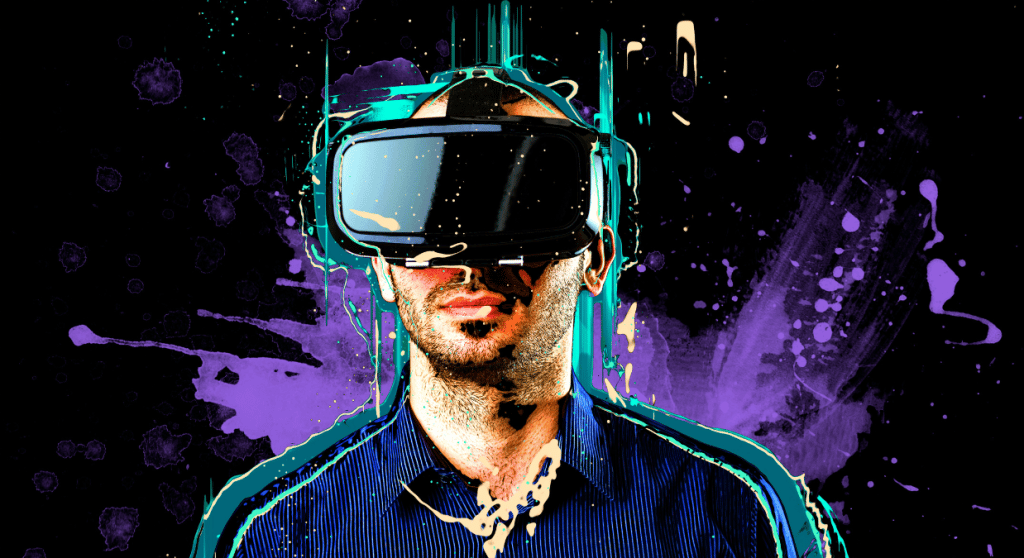The 7 best in-demand skills for all instructional designers in 2023
The field of instructional design is growing at a rate of knots, with countless people making the switch to workplace education and realizing what a great career choice it can be; this could be straight out of university or transitioning from another industry.
With the massive shift, both pre and post-pandemic, to a more diverse workplace where corporate learning takes place through a wide variety of modalities, the instructional design field has become a much more attractive option for people.
Related: How to become an Instructional Designer (with skills)
As well as this, the L&D/training space has transformed over the last 10 years, from mainly a classroom-based, in-person model to a more engaging, interactive, and multi-format world, propelled by new learning technology developed at a rapid rate.
According to a joint survey conducted by the Association for Talent Development and International Association for Continuing Education and Training, 31% of current Instructional Designers feel that their job title needs to describe what they do accurately.
I concur with this; as an L&D Specialist, my role has progressed way beyond what my duties state, and as a 1–person team, being adaptable to learning new skills is crucial to my organization’s success.
I want to show an example of a job description (see below) to demonstrate the type of skills typical workplaces are asking for right now…
So, with all this considered, let’s talk tbout The 7 best in-demand skills for all instructional designers in 2023
Graphic and Visual Design
The 7 best in-demand skills for all instructional designers in 2023

These are skills that have their importance minimized a lot, but look at almost any ID job description, and you’ll see knowledge and expertise needed in products such as; Canva, Illustrator, Photoshop, and InDesign as a few examples.
This is important because after the theory, needs assessment, storyboarding, and planning components of an ID project, you are going to have to develop a learning experience that is immersive and provides an interactive visual experience to your learners, and for that, having robust graphic design and composition skills are very much required.
When developing eLearning, you need to know through your storyboard what elements you are putting on the screen and why they deserve to be there (mise-en-scene). Also, does it appeal to the story you are trying to tell, or does it complicate the process of learning?
Lastly, having knowledge of these software’s and theories will speed up your workflow and provide you to translate your storyboarded vision into digital reality. If you need to do quick, professional mock-ups, then Canva should be your go-to, but if a more polished outcome is required with more intricate abilities, then Photoshop would be the best choice for sure.
All in all, these programs are a must to have at least a working knowledge to provide you a step up in your role as an instructional designer. This will enable you to develop rapid designs to create the learning you are developing.
Video Production
The 7 best in-demand skills for all instructional designers in 2023

I’ve put this as number 2 on our list of the 7 best in-demand skills for all instructional designers in 2023, not because it’s paramount to know, but with video content being so prevalent now (YouTube, TikTok, Instagram, etc.), if you know how to produce video, you can separate yourself from the rest of the pack.
If I take my role, I am asked how we can produce and implement more videos into my organization’s work. This is quite exciting, as video can reach and engage people in ways other mediums cannot, but never be afraid to ask why, and is video the right choice for our needs?
If you want to show your creativity and ability in this area, you should think about leveling up your film-making knowledge; understanding filming, cameras, lighting, composition, angles, and general film-making theory will massively help make you head & shoulders above your competition for ID roles when applying.
One of my favourite set of courses for learning general film-making are listed below:
Tomorrows Film-maker
You can purchase this course here.
Light and Face: The Art of Cinematography
You can purchase this course here.
Film-making Basics: Master Camera Settings, Framing, Lighting, Audio & more (Skillshare)
You can purchase this course here.
These courses are great options to develop the skills you will need to help with video production in your organizations, offer huge value to your leadership, and enforce the importance of the L&D function.
Project Management Skills
The 7 best in-demand skills for all instructional designers in 2023

When you are working as an instructional designer, either in a corporate setting or as a freelancer, knowing how to design and create a project plan or project charter is extremely important as it can set the stage for how your ID project will run.
Having strong project management skills will help you build and scope out a plan, who will your SMEs be, who will be responsible for what tasks, who can review, who can approve, what are the timelines, approval process, and manage expectations of project sponsors, amongst many other details.
You can level up your project management skills in multiple ways, from taking a course on a program like LinkedIn Learning, taking on a certification, or shadowing project managers to see what their workflow is like.
Overall, it will massively level up your instructional design ability and impress any client or team you’re working with, as well as save time and money in the process.
Also, you should check out this book: Project Management Skills for Instructional Designers: A Practical Guide
Communication skills
The 7 best in-demand skills for all instructional designers in 2023

Out of our list of the 7 best in-demand skills for all instructional designers in 2023, communication is one of the most significant needs for instructional designers in this modern era, and with good reason.
Whether you’re conducting in-person facilitation, virtually-led training, or developing online courses, being able to communicate with your learners effectively is a fundamental skill that allows you to translate your vision to them more efficiently and also instruct them on how to do what they need to do, in a way they can actually comprehend.
Remember, communication is not just verbal either, it can be written and through body language, so developing these skills will massively help you in your career, so hop to it people.
Don’t forget that listening is a massive part of our work as instructional designers, by listening we can sometimes gather more information than if we were leading the conversation.
Learning Tech Experience
The 7 best in-demand skills for all instructional designers in 2023

The L&D industry is awash with technology nowadays, everything from eLearning authoring tools such as Articulate Storyline, Rise, and Adobe Captivate, video editing tools such as Premiere, Final Cut Pro, and Resolve, and screen recording tools such as Camtasia, but do you need to know all of these to make it in the L&D industry as an instructional designer?
Honestly, in my opinion, you don’t need to know all of the tech available within the learning industry, but the more you know, the better you can help your learners.
Related: Do Instructional Designers Really Need Technology Skills?
Screen recordings are big business in our industry for tech training, and Camtasia is the global leader, so it should be a platform you put some time into learning.
Primarily though, ensure you put your time into learning your authoring tool of choice, such as Storyline 360. This should be your bread and butter, and in this industry, you’ll be expected to know these systems to a good standard to be able to create focused, interactive, learner-centric eLearning.
Don’t worry, though, it gets easier.
A great place to start would be the eLearning designer’s academy hosted by Tim Slade; he has a great community with terrific people helping each other out and working together to achieve great L&D outcomes.
Needs Assessment ability
The 7 best in-demand skills for all instructional designers in 2023

In our penultimate item on our list of the 7 best in-demand skills for all instructional designers in 2023, you should always conduct a valid needs assessment before you start any training initiative.
This is because we must understand the reasons and scope for why training may or may not be required. We also want to ensure that training is the correct solution because if the issue in question is environmental or cultural, then training would not be the right choice, and training is expensive, right?
Assessments always happen before any training content or training plan is developed. They can help prepare your SMEs and project sponsors for what the project will entail and their responsibilities.
4 Types of Analysis for Instructional Design
My advice would be to implement action mapping when doing your needs assessment, as it will help you understand what is needed and which direction your project should go.
By developing your needs assessment skills, you are propelling yourself onto a different level when it comes to getting the job you want and excelling in this wonderful instructional design profession.
Evaluation Skills
The 7 best in-demand skills for all instructional designers in 2023

Last, but most definitely not least, are evaluation skills.
This is an often left out part of the L&D process, but arguably the most important because learning how your training has affected learners and understanding how they are applying the knowledge you have taught them is invaluable to your work and your learners.
Many IDs still use the Kirkpatrick 4 levels of evaluation model (myself included) because it has been proven throughout the years to work and be effective at evaluating learning and how learning has impacted performance.
There are newer models out now pushing to knock the Kirkpatrick model off its perch, such as Brinkerhoff’s Success Case Method. This makes the Instructional designer look deeply at their training program, find the best and worst performing elements, and deeply analyze what happened and what can be improved.
Other training evaluation models of note are:
Anderson’s Value of Learning Model
Kaufman’s Model of Learning Evaluation
Developing evaluative skills for training programs is invaluable, and potential employers will love it because, as we all know, showing the value of L&D to leadership ensures we are seen as a positive force in our organizations, where we are respected and can provide immense value to our learners and the people we report to.
If you want more information on evaluation methodologies, check out this blog post which goes into a lot more depth
Looking to the future of L&D
The 7 best in-demand skills for all instructional designers in 2023

So that’s a wrap for our list of the 7 best in-demand skills for all instructional designers in 2023.
The future of L&D is exciting to think about. The industry is changing at a rate of knots, and we will have to take on more automation where our roles will change and adapt, but as long as we are prepared and ready, the world is our oyster.
Here are some of the newer learning trends estimated to be huge as we move into the next 5-10 years.
Virtual Reality (VR)
The ability to create complete virtual recreations of entire environments. This is great for training that requires a safe learning space, such as construction and safety training.
Augmented Reality (AR)
Augmented reality is where we superimpose virtual elements over the top of a real-world environment, kind of similar to Pokémon Go.
This can have all sorts of benefits, such as office walk-throughs, any training of a physical nature, and where learners have to perform multiple tasks.
Machine learning, artificial intelligence, and bot-driven task management are the other learning trends projected to be significant in our future.
All these things aim to automate repetitive tasks that our learners must do daily, so we must be more people-centered. By doing this, the skills we build should be focused on what is needed to develop talent in our respective organizations.
Final Thoughts
As instructional designers, it’s imperative to continue building our skills and diving in headfirst into our own professional development. However, sometimes workload gets in the way, and we bypass our own development needs.
When it comes to developing skills, you have a ton of different options, such as non-accredited learning platforms such as; LinkedIn Learning, Coursera, and Udemy, world-leading conferences such as DevLearn, and online communities such as Tim Slade’s eLearning designer’s academy.
You can also attend formal education and choose one of the hundreds of instructional design, adult education, and learning technology undergrad and masters degrees from institutions such as; Harvard, University of Arizona, and Northeastern, amongst many others.
Whether you are transitioning into the instructional design field or are a seasoned pro, developing the above skills and competencies will ensure you keep ahead of the pack and future-proof yourself in the world of learning and development and will make the “go to” person for all things in our instructional design world.
Hopefully, our list of the 7 best in-demand skills for all instructional designers in 2023 has been really helpful and allow you to level up your skills to keep pace with a fast and quickly changing industry.
Let us know how these helped you in the comments.
Chow for now!
Peace!

Hey, I’m Kris Taylor. I’m a Learning and Development professional currently in the healthcare field, with over 8 years of experience in the area of corporate education. I have created numerous instructional content for various corporate projects including eLearning, in-person facilitation, and virtual training across a wide variety of learning interventions and sectors. On Taughtup, I discuss topics ranging from how to succeed through K-12 to college all the way to instructional design tips for L&D designers.







